Your Seasonal Guide to Seasonal Landscaping Maintenance: Lawn Care & Yard Upkeep
Ready to transform your landscaping?
Landscaping is not a one-time event; it requires constant attention and care to maintain its beauty and function. Seasonal landscaping maintenance is a crucial part of upkeeping your outdoor space, as it can significantly improve the aesthetic appeal and overall value of your property. It involves taking care of plants, trees, flowers, and other elements of your landscape according to the changing seasons. Each season presents its unique challenges and requirements, and understanding these can help you maintain a vibrant and healthy landscape year-round.
Seasonal changes can have a profound effect on your landscape. For instance, the blossoming of plants and flowers in spring calls for pruning and fertilizing, while the dry summer heat might necessitate regular watering and shading. Autumn leaves scattered across your lawn require raking, and winter snow could potentially damage your plants and trees if not properly prepared for. Additionally, pests and diseases also vary with the seasons, necessitating different treatment and prevention measures. Thus, effective seasonal landscaping maintenance is about adapting to these changes and making sure your landscape thrives despite them.
This article will serve as a comprehensive guide to seasonal landscaping maintenance. We will explore what tasks should be prioritized in each season and provide tips on how to manage common challenges that come with the changing seasons effectively. We will also delve into the benefits of regular landscaping maintenance, from enhancing the beauty of your outdoor space to preventing costly damage. Whether you’re a seasoned gardener, a new homeowner, or a landscaping enthusiast, this guide will equip you with the knowledge you need to keep your landscape in top shape all year round.
Understanding Your Landscape
Understanding your landscape is a critical part of seasonal landscaping maintenance. This involves three key aspects: knowing your soil type, identifying the plants and trees in your landscape, and understanding your geographical location and its climate. The type of soil you have in your garden can significantly impact your landscaping strategies. Different soil types, such as sandy, loamy, or clay, have distinct characteristics and require specific care. For instance, sandy soil drains quickly and might need more frequent watering, while clay soil retains water longer and may require less frequent watering. Therefore, understanding your soil type can help you tailor your watering and fertilization practices to your landscape’s specific needs. Equally important is identifying the plants and trees in your landscape. Different plants have different requirements for sunlight, water, and nutrients.
Some plants may thrive in sunny spots, while others prefer shade. Knowing the types of plants you have can help you arrange them correctly and provide the right care. Also, understanding the life cycle of your plants can guide you on when to prune, fertilize, or replant them to ensure their health and longevity. Lastly, understanding your geographical location and its climate plays a crucial role in landscape maintenance.
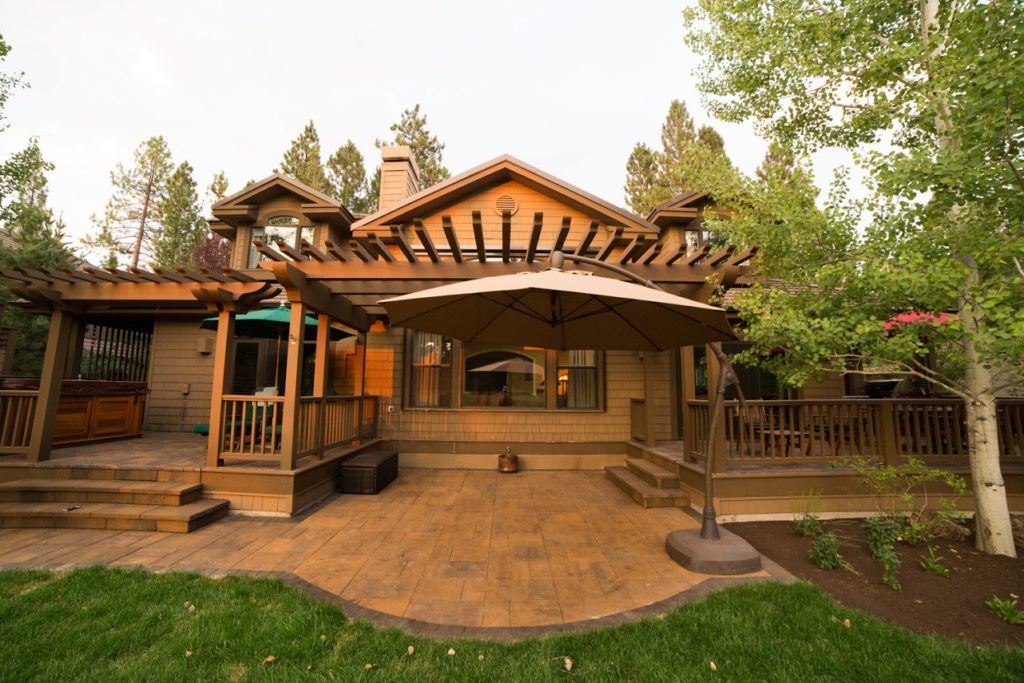
Other Services
4 Essential Parts of Your Landscape
- Hardscape elements: Hardscape refers to the non-living features of a landscape such as pathways, patios, walls, and other structural elements. These elements provide structure and organization to your outdoor space while also serving functional purposes. For example, a pathway can lead visitors through the garden while a patio provides an area for outdoor dining or relaxation. When designing your landscape, it is important to carefully plan these hardscape elements to ensure they complement the overall design and serve their intended purpose.
- Softscape elements: Softscape includes all living components of a landscape such as plants, trees, shrubs, and grass. These elements add color, texture, and dimension to your outdoor space. When choosing softscape elements for your landscape, consider factors like climate conditions, maintenance requirements, and aesthetic appeal. By carefully selecting and arranging softscape elements in your landscape, you can create a visually appealing and cohesive design.
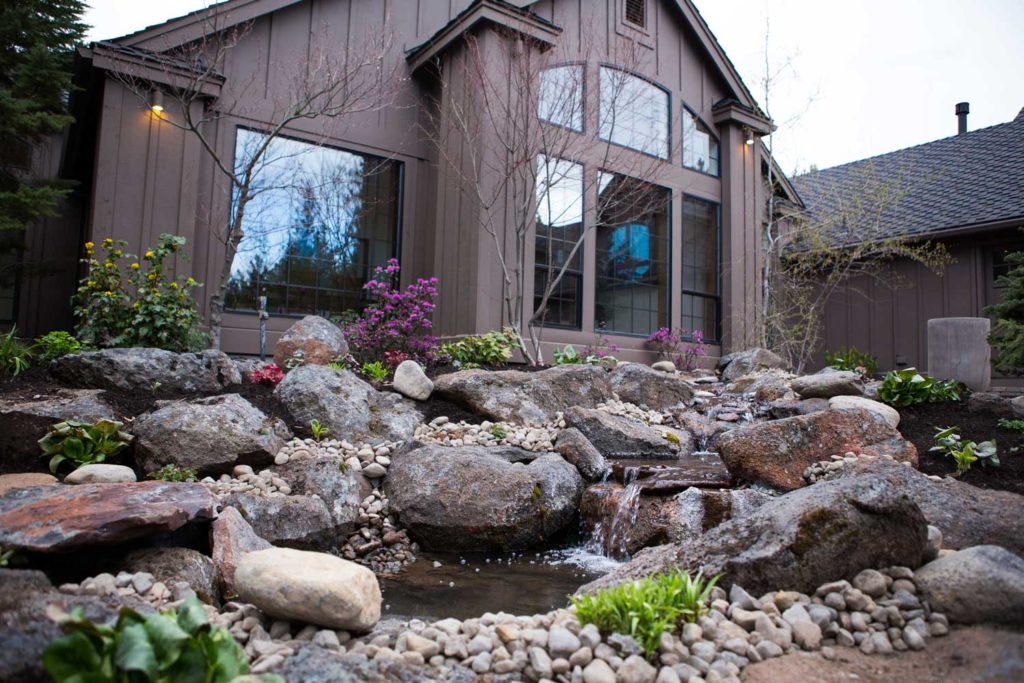
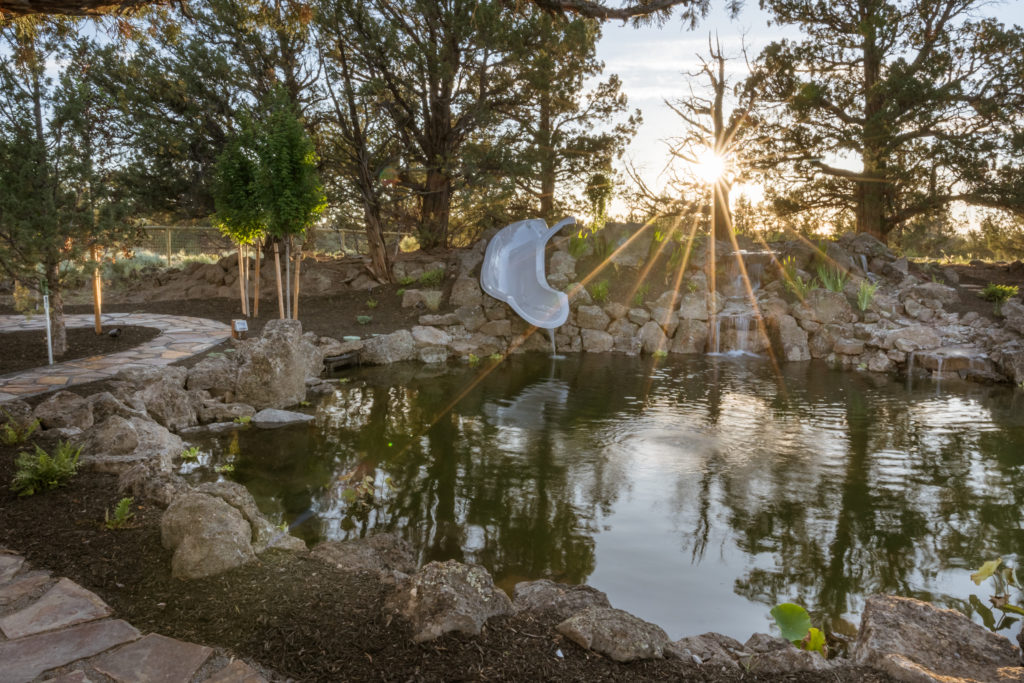
- Water features: Water features are becoming increasingly popular in landscapes as they add both visual interest and soothing sounds to the outdoor space. Examples of water features include fountains, ponds, streams, and waterfalls. Incorporating a water feature into your landscape can create a serene atmosphere while also attracting wildlife such as birds and butterflies.
- Lighting: Outdoor lighting is an essential part of any landscape design as it not only adds ambiance but also extends the usability of the outdoor space into the evening hours. Properly placed lighting can highlight key features of your landscape such as plants or hardscape structures while also providing safety and security by illuminating walkways and stairs. With options ranging from traditional bulbs to energy-efficient LED lights, there are plenty of options to choose from when planning the lighting for your landscape.
By incorporating these 4 essential parts into your landscape design – hardscape elements for structure and function, softscape for color and texture, water features for visual interest and serenity, and lighting for ambiance and functionality – you can create a well-balanced and aesthetically pleasing outdoor space that meets your needs and enhances the overall appeal of your property.
Seasonal Lawn Care Plan: Year-Round Landscape Maintenance Tips
Understanding the intricacies of seasonal lawn care is crucial for sustaining a verdant and vibrant landscape year-round. At Newport Ave Landscaping, we emphasize the importance of creating a customized plan that caters to the unique needs of your soil and plant species. In spring, our services prioritize preparing your garden for the growing season, which includes testing soil quality, initiating irrigation systems, and applying the appropriate fertilizer to energize the grass and plants.
During summer, water management becomes paramount; our irrigation services ensure your lawn receives optimal moisture while our control measures protect against pests and diseases. As the season shifts to fall, it’s time to introduce mulch to help retain soil moisture and temperature, and to fertilize once more to maintain your yard’s hardiness through the colder months. Moreover, we provide specialized yard maintenance to prep your garden for the dormant winter period, where our services include crucial tasks such as protecting sensitive plants and managing snow coverage. By adhering to this seasonal guide, Newport Ave Landscaping assures that your outdoor sanctuary remains impeccably maintained throughout the year, leaving you with a lush, healthy lawn that stands the test of time and the shifts of the seasons.
Spring Maintenance
Spring is a critical time for landscaping maintenance. It’s time to shake off the lethargy of winter and prepare your yard for the growing season. Cleaning up winter debris is the first step in this process. Rake up any leaves, twigs, and other waste that have accumulated during the winter months. This not only keeps your landscape tidy, but also prevents pests and diseases that can take hold in the debris.Once your yard is clean, it’s time to prepare the soil for spring planting. If you’ve understood your soil type as suggested in our previous section, you’ll know exactly how to treat your soil. Usually, this involves turning the soil and adding organic matter like compost or manure to improve its fertility and structure. This step ensures that the seeds or seedlings you plant have the best possible start.
Simultaneously, you should be pruning and trimming trees and shrubs. This helps to control their size, shape, and the direction of their growth. It also removes dead or diseased wood, promoting the health of your trees and shrubs. Be sure to identify your plants and understand their specific pruning needs, as different species require different methods and timings of pruning.
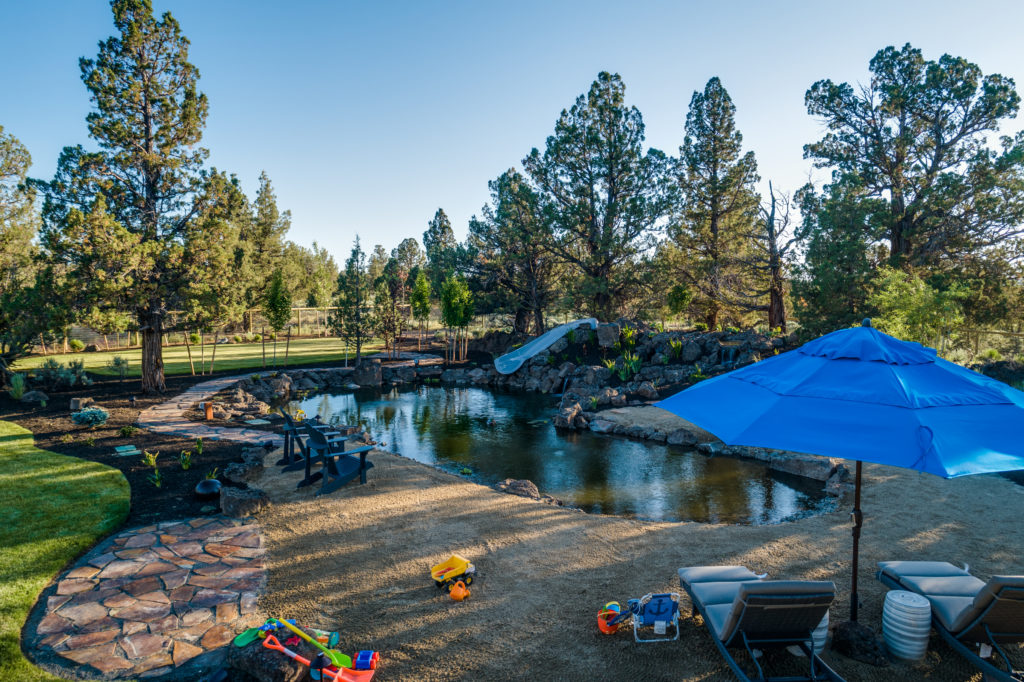
Summer Maintenance
As we transition from spring to summer, your landscape will need different care to thrive in the higher temperatures. One crucial aspect of summer maintenance is maintaining a consistent watering schedule. Unlike in spring, when rainfall often provides natural hydration, summer months are typically drier, so your plants will rely more heavily on you for water. Watering in the early morning or late evening can help conserve moisture, as it reduces water loss due to evaporation during the hottest parts of the day. Another crucial task is mowing and edging your lawns. Regular mowing helps maintain a neat appearance and encourages denser growth, while edging helps define the borders of your lawn, giving it a clean and finished look. However, be careful not to cut the grass too short, as it could stress the lawn and make it more susceptible to pests and diseases. Speaking of pests and diseases, summer is often a high-activity season for many types of insects and plant diseases. Regularly check your plants for signs of infestation or disease, such as yellowing leaves or unusual spots. Early detection is crucial for effective management and treatment. Use environmentally friendly pest control measures where possible to maintain a healthy ecosystem in your garden. Weed control is another key aspect of summer landscape maintenance. Weeds can compete with your plants for nutrients and water, so it’s essential to keep them in check. Mulching can be a useful technique for preventing weed growth, as it blocks sunlight from reaching the weed seeds. Lastly, be ready to prepare your plants for the heat of summer. Some plants may need additional shade or water during extreme heat, while others may benefit from a protective layer of mulch to keep their roots cool. Pay close attention to the specific needs of each plant species in your landscape. By following these summer maintenance tips, you can keep your landscape looking vibrant and healthy throughout the hottest months of the year.Fall Maintenance
As the summer months give way to the brisk chill of fall, it’s important to shift your landscaping focus to prepare your garden for the winter months and the year ahead. The first task in fall maintenance is winter preparation. This involves ensuring that your plants are well protected from the coming cold. You can do this by applying mulch around the base of your plants to help regulate soil temperature and moisture levels during the winter. Next, fall is the perfect time to plant for the next year. This is the time to plant spring-blooming bulbs such as tulips and daffodils. Planting in the fall gives these bulbs time to establish roots before the winter freeze and ensures a vibrant, colorful bloom come spring.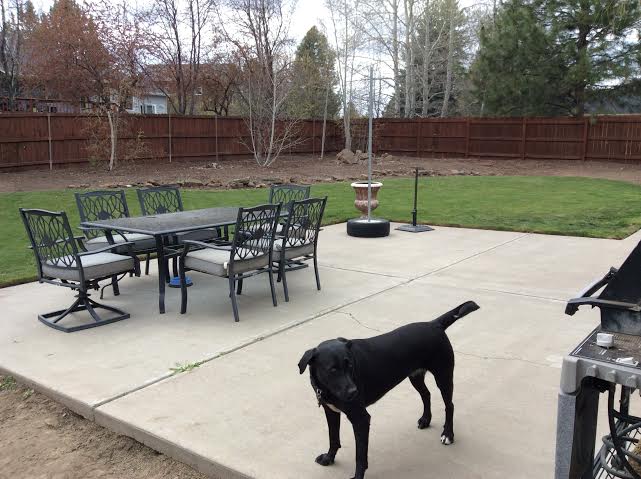
Winter Maintenance
As we bid farewell to fall and welcome the winter season, it’s essential to shift our focus on landscaping maintenance to protect our plants from frost and snow. Protective covers or frost blankets are one of the most effective ways to do this. These covers trap heat from the ground and provide a shield against harsh winter conditions. Additionally, applying a thick layer of mulch around the base of your plants can further insulate them, keeping their roots warm and protected from the damaging effects of frost heave.
Winter watering is another crucial task to keep in mind as it can be easy to neglect due to the colder temperatures. However, it’s important to remember that even during winter, plants can lose water through their leaves, leading to dehydration. Therefore, watering your plants, particularly evergreens and newly planted trees or shrubs, during dry spells in winter can help prevent desiccation.
Winter is also the perfect time to start planning for the next year. This includes assessing your landscape and noting any changes you’d like to make. Perhaps you want to add more color to your garden, introduce new plant species, or create a new outdoor space. Taking the time to plan during winter will allow you to hit the ground running when spring arrives.
Lastly, winter provides an excellent opportunity for equipment maintenance and storage. Your tools have likely worked hard during the growing season. Cleaning, sharpening, and repairing your tools now, when gardening tasks are fewer, can increase their longevity and improve their performance for next year. For power equipment like lawnmowers and leaf blowers, remember to drain or stabilize the fuel to prevent it from degrading and damaging the engine. Proper storage in a dry, clean area can prevent rust and keep your tools in top shape for the tasks ahead.
Year-Round Yard Landscaping Maintenance Tips
Maintaining a lush lawn and a vibrant garden requires a commitment to landscape maintenance throughout the year. To ensure your yard remains a focal point of your home, it’s essential to integrate a comprehensive lawn care plan that covers each season. Every plan should include regular services such as mowing the grass, controlling pests, and nourishing plants with the right fertilizer. However, it is also crucial to adjust your irrigation tactics over time to account for varying weather conditions and to use mulch to protect the soil and retain moisture. By doing so, you not only maintain, but enhance the overall health and appearance of your landscape.
Keep in mind that have unique needs, and the watering, fertilizing, and maintenance schedules should be tailored accordingly. Implementing these tips can make a significant difference in the life and resilience of your yard. For those who find the effort too time-consuming, engaging professional services from Newport Ave Landscaping might be a wise choice to ensure these important tasks are performed with expertise. Make a note to routinely check the condition of your soil and garden infrastructure to preempt the need for urgent measures. Remember, proactive care is the best strategy to keep your landscape looking its best year-round.
Conclusion
As we draw our guide to a close, it’s imperative to underscore the significance of seasonal landscaping maintenance. A well-tended garden is not solely a result of intermittent effort, but rather the outcome of consistent, year-round dedication. Each season brings with it specific needs for your garden, and staying abreast of these requirements will ensure that your garden flourishes in all conditions. Seasonal landscaping maintenance is not just about keeping your garden aesthetically pleasing, but it’s also about maintaining a habitat that promotes plant health, and in turn, contributes to the overall ecosystem’s wellbeing.
Here at Newport Ave Landscaping, we understand the importance of seasonal landscaping maintenance and are committed to helping you achieve a beautiful and thriving garden all year round. Our team of experts is equipped with the knowledge and skills to provide top-notch services tailored to your specific needs. From spring cleanups to fall leaf removal, we have you covered. Contact us today for a consultation and let us help you create a stunning landscape that will be the envy of the neighborhood. Remember, maintaining your garden throughout the seasons not only benefits you but also makes a positive impact on the environment. Let’s work together towards creating sustainable and beautiful landscapes.
